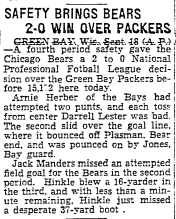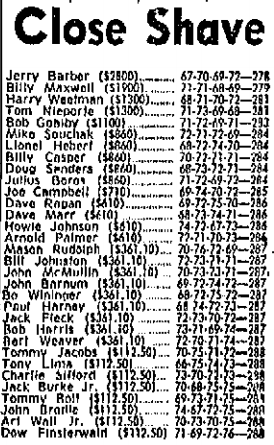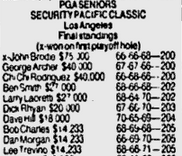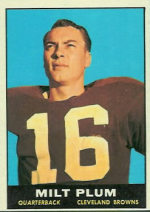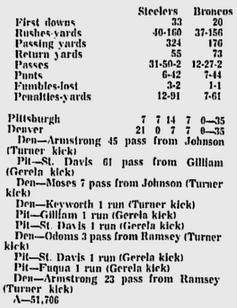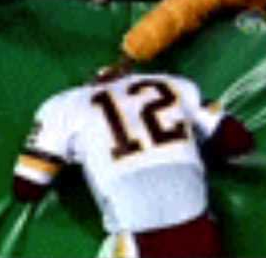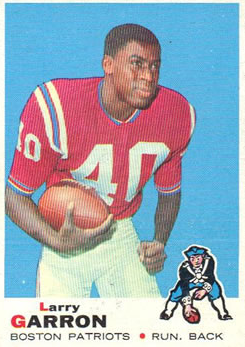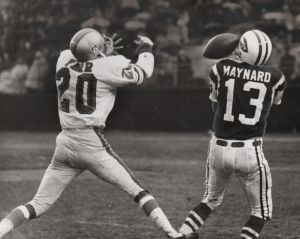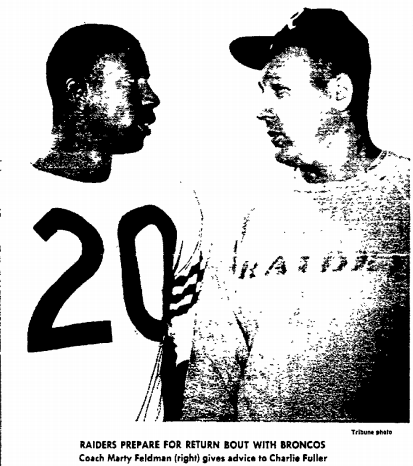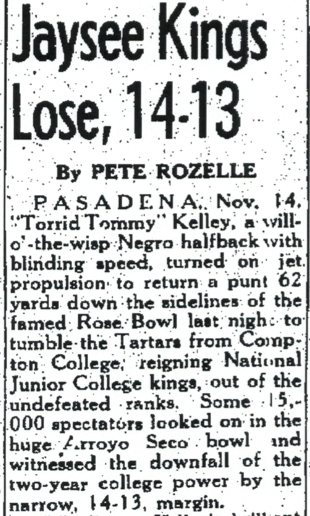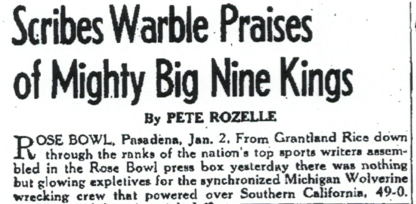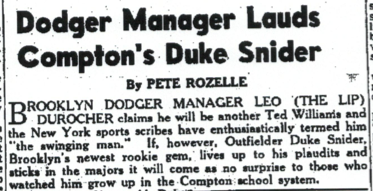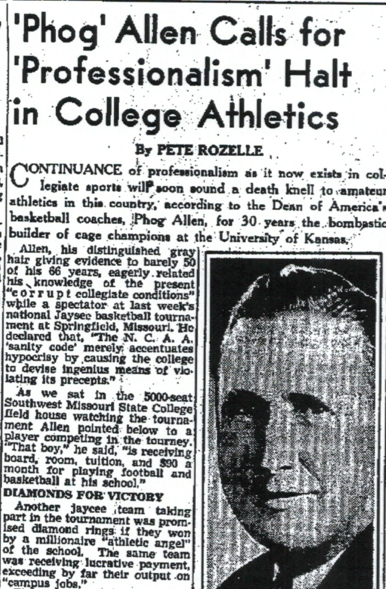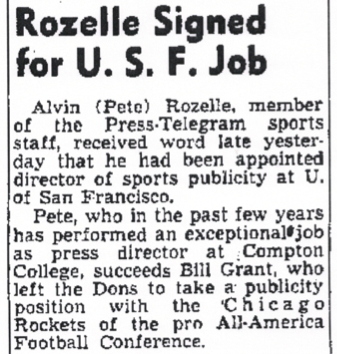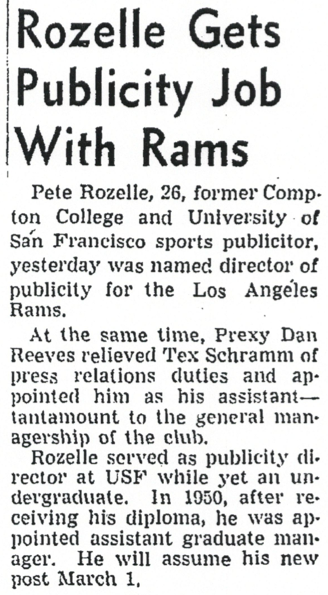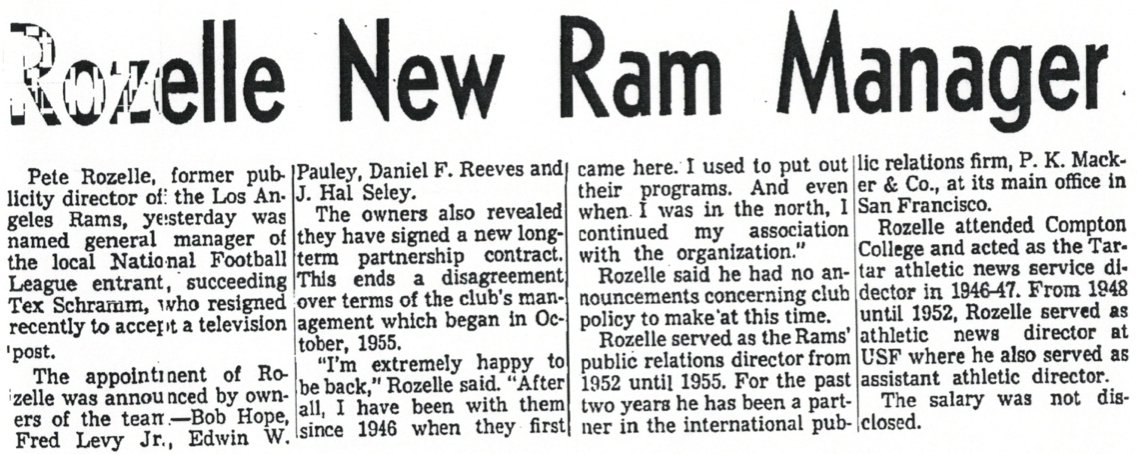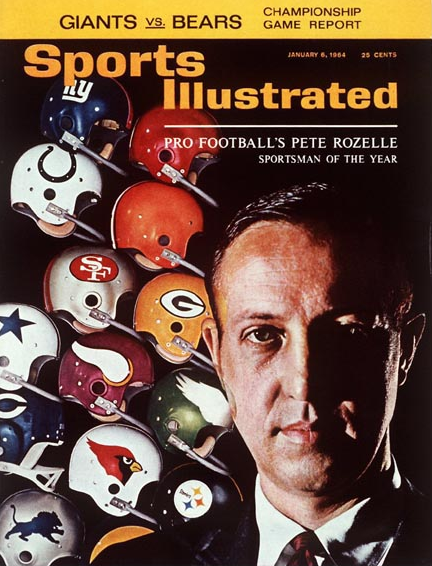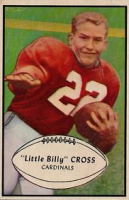On one side Sunday, you had the Bills’ Dan Carpenter booming a 58-yard field goal with four seconds left to give his team a come-from-behind 17-14 victory. On the other, you had the Lions’ Alex Henery missing all three of his boots — none shorter than 44 yards — and losing his job because of it.
That, friends, is all you need to know about the kicking profession in the 2000s. The NFL has kickers these days capable of knocking through a game-winner from 58 yards or longer, if need be. But the bar for them has been raised so high that missing more than a handful of boots a season — never mind three in an afternoon — is likely to put them on the unemployment line. They’re the victims of their own near-perfection.
Granted, Henery has had a rough go of it this year. In his two games for Detroit, he was 1 for 5 on field goal tries, a success rate that might have raised eyebrows even in the ’50s. But he also has a track record, and it’s pretty good. In his three previous NFL seasons, all with the Eagles, he converted 86 percent of his attempts. But now he’s gone because, well, that’s just the way it is in pro football.
As Lions coach Jim Caldwell put it: “There’s somebody out there for us that’ll do the job for us. We just got to see if we can track him down quickly.”
Translation: No biggie. We’ll just hold a tryout, open up another box of 86-percent kickers and see who performs best. (It turned out to be Matt Prater, the former Bronco.)
NFL soccer-stylers have become so accurate, even from great distances, that last year they were successful on 86.5 percent of their field goal tries (which made Henery, at 82.1, below average). There even have been kickers, two of them, who have gone through an entire season without missing. And, of course, Tom Dempsey’s 63-yarder, which had stood as the record since 1970, was finally topped by Prater, who booted a 64-yarder in Denver’s thin air last December.
The field goal is becoming almost as automatic as the extra point. So it’s easy to forget, with all these footballs tumbling through the uprights, that, at late as the ’60s, it was a very hit-or-miss proposition. And earlier than that, it was more miss than hit.
Let’s pay a visit to 1939 for a moment, to a game between the Redskins and Pittsburgh Pirates (they weren’t the Steelers yet). The Redskins won easily, 44-14, but they also missed five PATs. The Associated Press’ account read like this:
“Jim German ran off right tackle to a touchdown. Washington missed the kick. . . . [Andy] Farkas knifed through for the score. His kick was blocked by Sam Boyd. . . . Frank Filchock stood in the end zone, passed to Farkas on the 4-yard stripe, and Andy galloped 96 yards for a touchdown — a total gain of 99 yards. Turk Edwards’ kick was not good. . . . [Dick] Todd . . . raced 60 yards for another touchdown. Bob Masterson’s kick was not good. . . . Ed Justice went around left end . . . for the final Redskin[s] touchdown. [Bo] Russell missed the kick.”
This is obviously an extreme example of what I’m talking about. The Redskins were so far ahead that day that they started goofing around and letting everybody kick. (Russell and Masterson were their main guys.) But it just shows how casual teams could be about kicking and how inexact a science it was — even though PATs were 10 yards shorter because the goal posts were on the goal line.
Pittsburgh’s kicker, Armand Niccolai, was one of the better ones in the league — so good that, after he retired following the 1941 season, the team talked him into coming back for one more year. Since he’d already taken a coaching and teaching job at a local high school and couldn’t attend the Steelers’ practices, he just showed up for the games.
“He will not even don pads,” the Pittsburgh Post-Gazette reported, “but will be used exclusively as a placekicker.”
No practices and no pads! What a sweet deal. Alas, he made just 2 of 14 field-goal attempts that year and decided, wisely, to retire for good.
Niccolai’s final season is one of the worst of all time by a kicker. His competition:
WORST SEASONS BY KICKERS (10 OR MORE FGA)
[table width=”350px”]
Year,Kicker\, Team,Made,Att,%
1965,Bob Timberlake\, Giants, 1,15,6.7
1955,Art Michalik\, Steelers, 1,12,8.3
1939,Clarke Hinkle\, Packers, 1,10,10
1963,Bob Jencks\, Bears, 1,10,10
1952,Joe Geri\, Cardinals, 2,18,11.1
1942,Armand Niccolai\, Steelers, 2,14,14.3
1963,Jack Spikes\, Chiefs, 2,13,15.4
1950,Ted Fritsch\, Packers, 3,17,17.6
[/table]
All of them, by the way, kicked in the Old Style, with their toes rather than their instep. By the ’70s, though, almost every club had a soccer-styler, and success rates started going up . . . and up . . . and up. It’s just a more reliable way to boot the ball.
Still, while you’re snickering at these percentages, keep in mind: Many of these guys played another position — back when rosters were smaller — in addition to handling the kicking. That certainly raised the margin for error. (Sonny Jurgensen once told me he never had receiver Bobby Walston run a deep route on third down when the Eagles were in field goal position because he didn’t want Walston to be tired if he was needed to kick.)
Just out of curiosity, I thought I’d find out which kickers have missed the most kicks — field goals or extra points — in a season. There are some interesting names on it, including two Hall of Famers.
MOST MISSED KICKS IN A SEASON (FG AND PAT)
[table width=”450px”]
Year,Kicker\, Team,FG,PAT,Total
1964,Paul Hornung*\, Packers,12-38,41-43,28
1961,John Aveni\, Redskins,5-28,21-23,25
1976,Jan Stenerud*\, Chiefs,21-38,27-33,23
1963,Lou Michaels\, Steelers, 21-41,32-35,23
1967,Bruce Gossett\, Rams,20-43,48-48,23
1969,Tom Dempsey\, Saints,22-41,33-35,21
1969,Roy Gerela\, Oilers (AFL),19-40,29-29,21
1969,Gino Cappelletti\, Patriots (AFL),14-34,26-27,21
1966,Bruce Gossett\, Rams,28-49,29-29,21
1963,Jerry Kramer\, Packers,16-34,43-46,21
1963,Tommy Davis\,49ers,10-31,24-24,21
1960,Larry Barnes\, Raiders (AFL),6-25,37-39,21
[/table]
*Hall of Famer
If you’ve ever wondered why Vince Lombardi’s Packers didn’t win the title in 1963 and ’64 — after going back to back in ’61 and ’62 (and winning three more from 1965 to ’67) — you can start with kicking. Kramer and Hornung missed 44 field goal tries in those seasons, and the Golden Boy’s 26 misses in ’64 are an NFL record that probably will last forever. After serving a one-year suspension in ’63 for betting on games, Paul simply lost it as a kicker.
It’s also worth noting that the kicker who has missed the most field goal attempts in a game since 1960 — the Cardinals’ Jim Bakken, six, vs. the Falcons in ’66 — turned around the next season and booted seven in a game, a mark that wasn’t broken for 40 years.
That’s what was so ironic about the Bills-Lions game. Henery got fired for going 0 for 3, right? Guess who the last kicker to have an 0-for-4 day was.
Carpenter, Buffalo’s hero, in 2010.
So maybe this isn’t the last we’ve heard of Alex Henery.
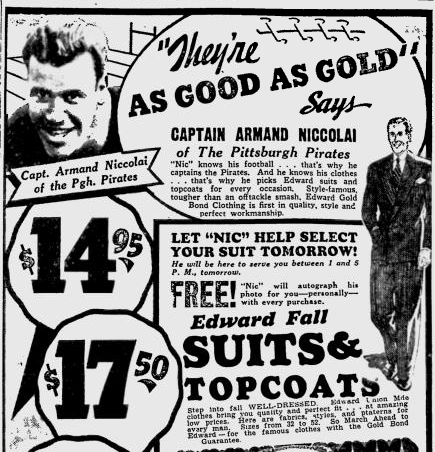
Source: pro-football-reference.com





